Starting a business with limited resources can be a daunting task. Every penny and minute spent must count. But one tool that no business can afford to overlook is email marketing. In a world filled with various ways to connect with customers, email marketing stands out as a powerful and cost-effective strategy. The numbers don’t lie; email marketing is not just about landing in inboxes; it’s a game-changer for businesses.
Why Email Marketing Matters
1. Direct Connection with Your Audience
Email marketing allows you to communicate directly with your audience. When someone subscribes to your email list, they are giving you permission to contact them. This direct line of communication is invaluable for building relationships, sharing information, and promoting your products or services.
2. High Return on Investment (ROI)
Email marketing consistently delivers one of the highest ROI of any marketing channel. For every dollar you invest in email marketing, you can expect an average return of $40. This impressive ROI makes it a cost-effective choice for businesses of all sizes.
3. Widespread Usage
Email is a universal communication tool. In 2022, there were over 4.3 billion email users worldwide, and this number is expected to grow to 4.6 billion by 2025. Regardless of your target audience, they are likely using email, making it an ideal platform to reach customers.
4. Personalization and Segmentation
Email marketing allows for deep personalization and segmentation. You can tailor your messages to individual recipients based on their preferences, behavior, and demographics. This level of customization makes your emails more relevant and engaging.
5. Building Customer Relationships
Email marketing isn’t just about selling; it’s also about building and nurturing relationships with your customers. You can use emails to provide value, share useful content, and engage in a dialogue with your audience. This fosters trust and loyalty over time.
6. Cost-Effective
Compared to many other marketing channels, email marketing is highly cost-effective. You don’t need a large budget to get started, and you can reach a substantial audience without breaking the bank.
7. Tracking and Analytics
Email marketing platforms offer robust tracking and analytics tools. You can measure the success of your campaigns, track open and click-through rates, and gain insights into what works best for your audience. This data-driven approach allows you to continuously improve your email marketing strategy.
8. Versatility
Email marketing is versatile and adaptable. You can use it for various purposes, from promoting products and announcing sales to sharing blog posts and sending personalized recommendations. The flexibility of email marketing makes it suitable for a wide range of businesses and industries.
9. Strong Open Rates
Well-crafted and relevant emails can achieve high open rates. For example, welcome emails have an open rate of 68.6%, indicating that customers are eager to engage when they initially connect with your brand.
For e-commerce businesses, email marketing offers a powerful tool for recovering abandoned carts. Sending a series of abandoned cart emails can lead to a 69% increase in orders compared to sending a single email.
The Statistics Speak for Themselves
Let’s dive into the compelling statistics that reveal the incredible potential of email marketing:
1. The Widespread Usage of Email
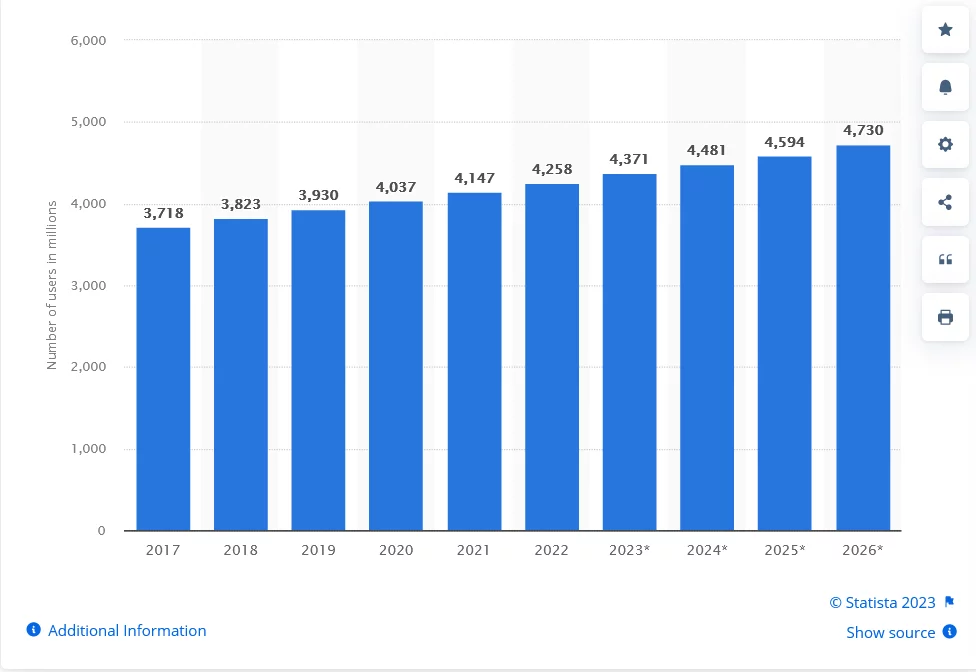
The ubiquity of email usage is a fundamental reason why email marketing is essential. With over 4.3 billion users in 2022, it’s a channel that allows you to reach a vast global audience. This means no matter how small your business is, you have the power to connect with people around the world. The reduced time and effort required for email marketing help you structure your strategy effectively, ensuring 24/7 communication with your audience.
2. Billions of Emails Are Sent Daily
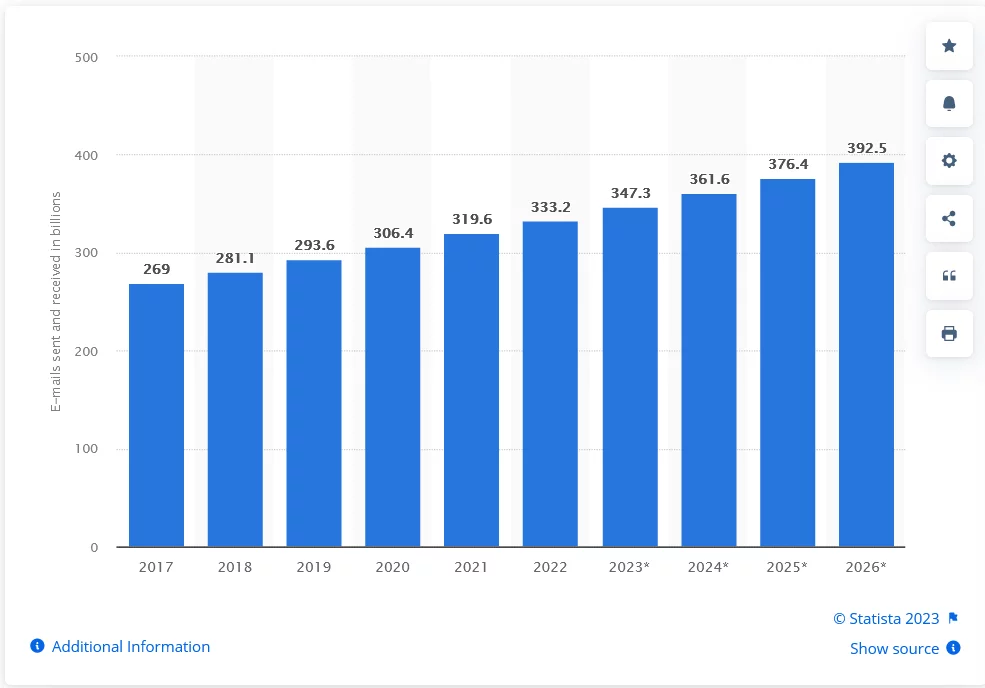
*Number of sent and received e-mails per day worldwide from 2017 to 2026
The sheer volume of daily emails highlights the continued relevance and growth of email marketing as a communication tool. Even in the face of emerging communication channels, email marketing remains robust. The statistic emphasizes that the potential of an effective email marketing campaign is hard to ignore.
3. Email Delivers a Strong Return on Investment (ROI)

The ROI of email marketing is nothing short of impressive. For every dollar invested, you can anticipate a return of $40. This makes it one of the most cost-effective marketing methods available. The ROI is significantly higher than other marketing channels like SEO and keyword ads. In a world where businesses must make every marketing dollar count, email marketing shines as a highly profitable choice.
4. Use of Email for Content Distribution

Email marketing is a favorite choice for marketers to distribute content. It ranks third in popularity behind a company’s website and blog. Email offers a personal and direct way to deliver valuable content to your audience, making it a crucial tool for content distribution. Moreover, email marketing is highly versatile, allowing you to adapt your messages to different segments of your audience.
5. Email Marketing Helps Grow Your Business
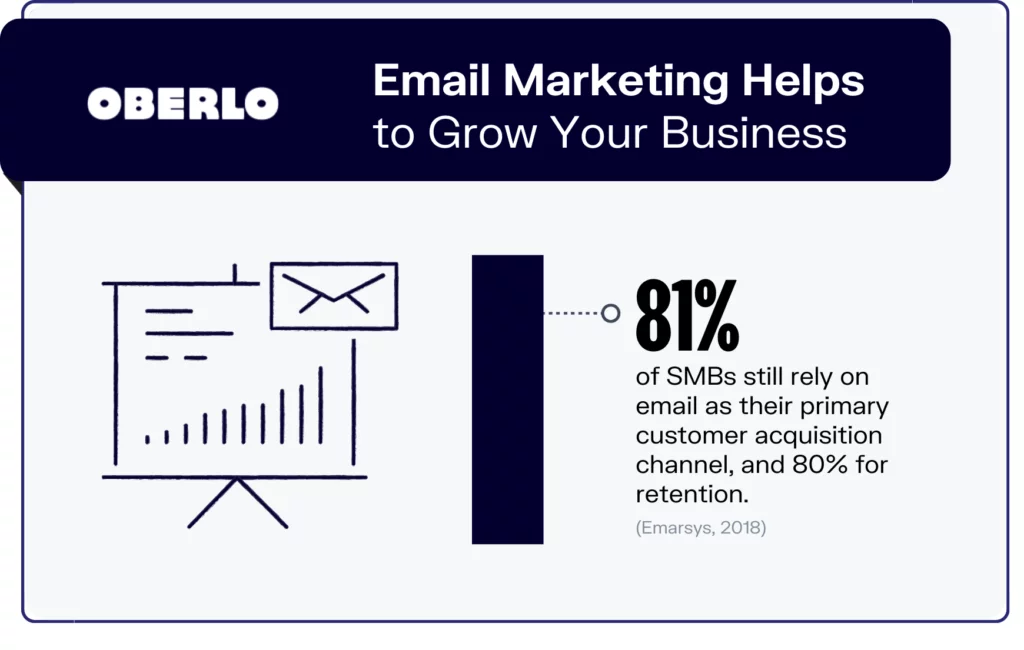
Despite the increasing popularity of social media and other digital channels, email marketing remains the primary driver of customer acquisition and retention for small and midsize businesses. It outperforms channels like social media and paid search. This statistic underscores the enduring value of email marketing as a direct and highly effective channel for reaching and retaining customers.
6. Welcome Emails Have a High Open Rate
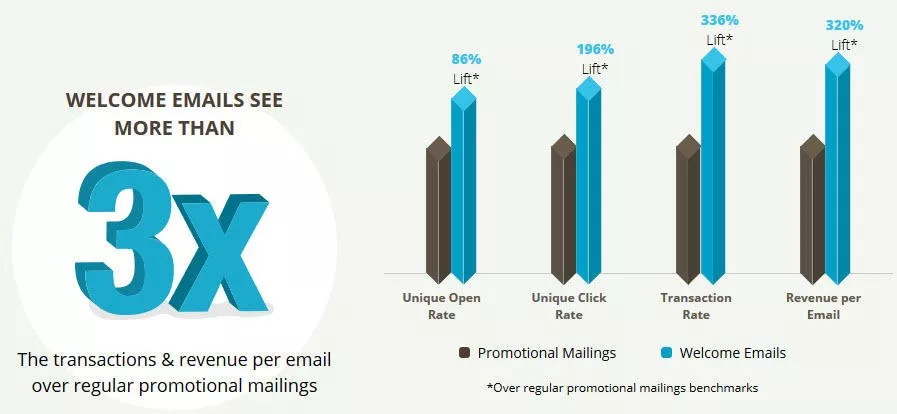
Welcome emails are your first point of contact with new subscribers or customers. Their exceptionally high open rate of 68.6% highlights their importance in engaging your audience from the start. It’s an excellent opportunity to provide valuable information and make a positive first impression on your subscribers.
7. Personalization Works Wonders For Email
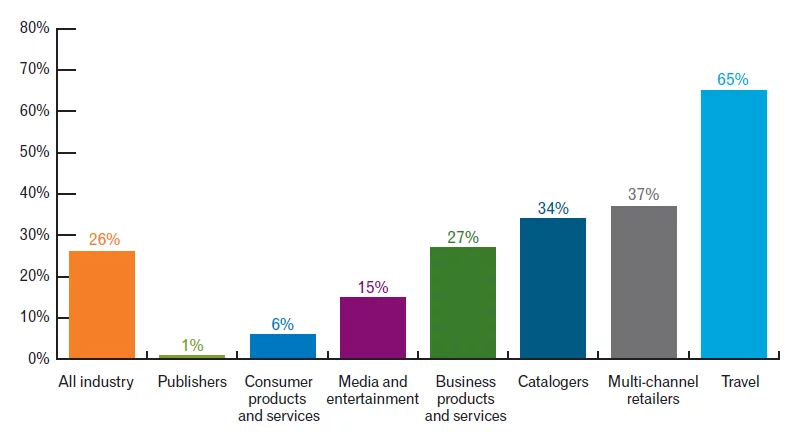
Personalization is a powerful strategy in email marketing. It’s not limited to addressing recipients by name; it extends to creating content that’s relevant to individual recipients. Personalized subject lines are a prime example, driving a 50% higher open rate. Personalization shows that you understand your audience’s needs and preferences, leading to better engagement and higher open rates.
8. The Power of Abandoned Cart Emails

Abandoned cart emails are a compelling tool for e-commerce businesses. When customers add items to their cart but don’t complete the purchase, a series of abandoned cart emails can be highly effective. This statistic demonstrates that these emails can significantly boost revenue. People often leave items in their cart with the intention to purchase, and these emails act as gentle reminders, encouraging them to complete the transaction.
9. Interactive Emails Are the Way Forward

The email landscape is evolving, and interactive content is becoming increasingly popular. Adding elements like videos, sliders, collapsible menus, and GIFs can make your emails more engaging and visually appealing. This statistic showcases that videos, in particular, can drive a 300% increase in click rates. It’s an exciting way to stand out in crowded inboxes and keep your audience engaged.
10. Customers Like to Hear From You

This statistic highlights that your audience is eager to hear from you via email. Despite concerns about sending emails too often, almost half of consumers appreciate receiving promotional emails from their favorite brands on a weekly basis. It’s a strong indication that email is a well-received and preferred communication channel for customers.
11. Types of emails consumers are more likely to buy from
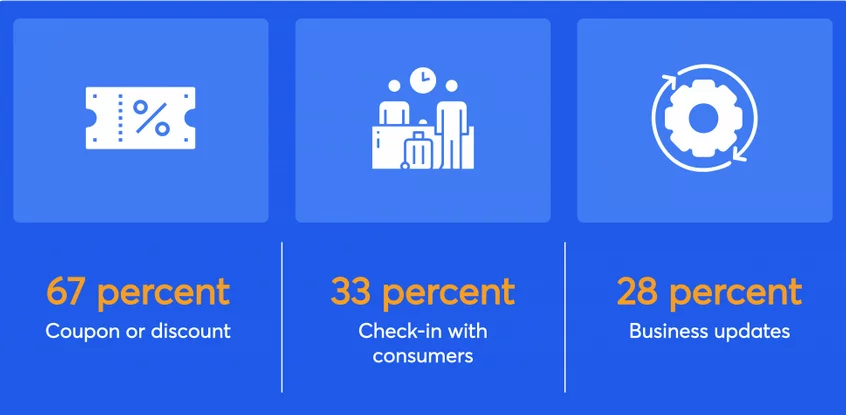
Your customers are undoubtedly email users, making it imperative for your business to leverage this powerful communication channel. Regardless of your industry, email marketing offers you the means to connect with your customers wherever they may be. Remarkably, 60 percent of consumers have made purchases influenced by marketing emails they’ve received. This statistic underscores the significant impact and potential of email marketing as a valuable tool for engaging and converting your audience.
12. Email automation
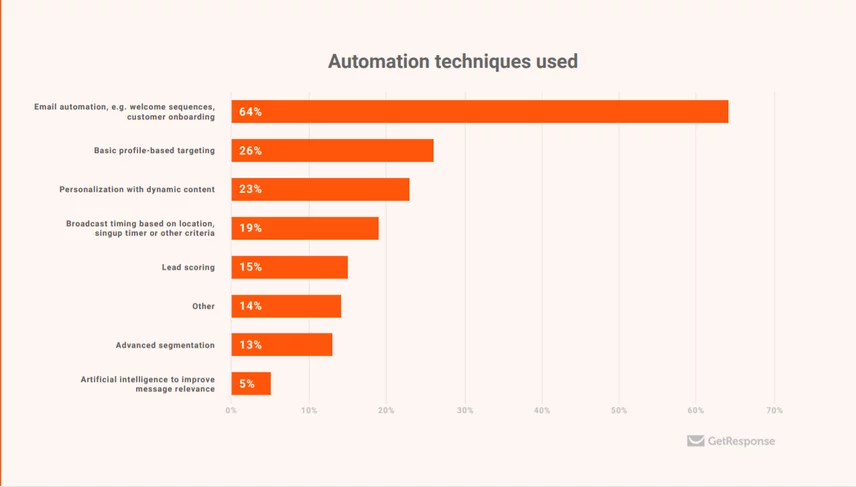
Email automation has proven to be a transformative force in the marketing landscape. It streamlines processes, enhances personalization, improves customer retention, and drives conversions. The statistics clearly demonstrate that businesses embracing email automation are reaping the benefits, making it an essential tool for both B2C and B2B marketing strategies.
13. Technologies used for B2C Marketing
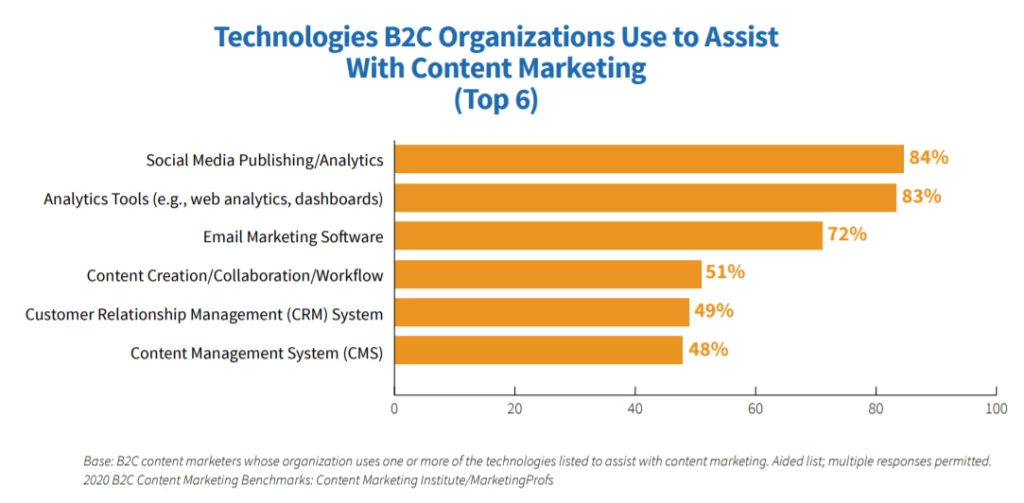
B2C email marketing is a dynamic and results-driven approach that plays a pivotal role in eCommerce. It’s a preferred communication channel for consumers, with personalization, abandoned cart recovery, promotions, and segmentation serving as key strategies. By leveraging email marketing effectively, B2C businesses can nurture customer relationships, drive sales, and foster brand loyalty in a competitive digital landscape.
Best Practices for Email Marketing:
1. Write An Inviting Subject Line

Crafting an engaging subject line is crucial in capturing your email subscribers’ attention and encouraging them to open your emails. Personalization is a potent approach, but there are additional key considerations:
- Conciseness: Keep your subject line brief and to the point. A concise subject line is more likely to grab the reader’s attention.
- Brand Alignment: Ensure that your subject line aligns with your brand’s voice and style. Consistency in messaging helps in brand recognition.
- Reflect the Email’s Goal: Make sure your subject line clearly reflects the email’s purpose. It sets the reader’s expectations and helps in achieving the desired action.
For instance, if you’re crafting a welcome email subject line, considering their high open rates, you might use subject lines like:
- “Welcome to [Your Brand]! Here’s what’s next.”
- “Get started with [Your Brand].”
- “Thanks for joining [Your Brand].”
Avoid misleading or forceful words like “urgent” or “now,” as they can trigger spam filters. If you’re uncertain about your subject line’s effectiveness, consider using email subject line testing tools like Moosend’s Refine.
2. Conduct A/B Testing
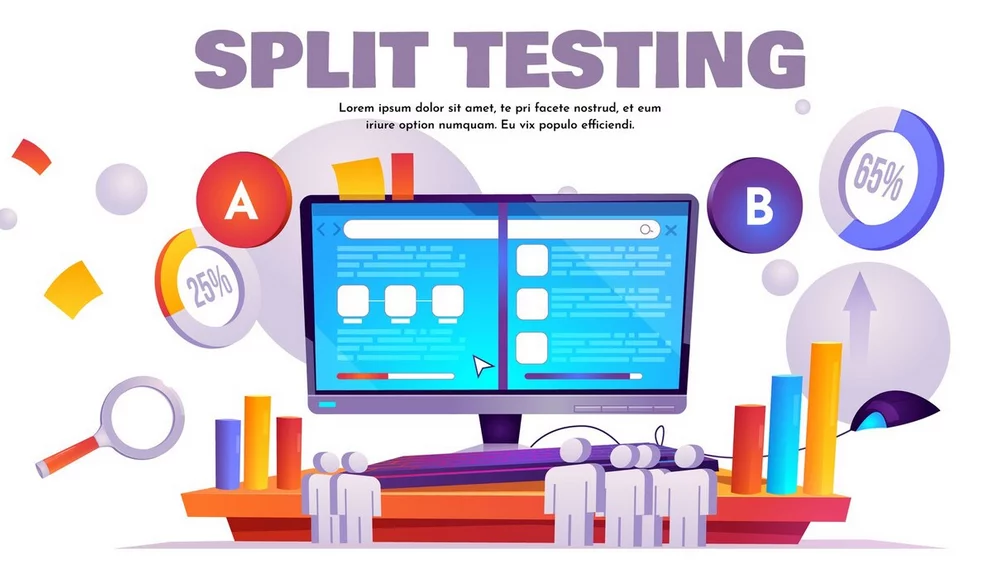
A/B testing, also known as split testing, allows you to compare two different versions of an email (or its components) to determine which one performs better. For example, you can compare two subject line variations, and the one that garners more opens will be sent to the majority of your subscribers.
This method is invaluable for experimenting with different aspects of your emails to understand how your subscribers respond. Identifying patterns in what works and what doesn’t will enable you to optimize your email marketing strategy over time, gradually moving towards success.
3. Try List Segmentation

Segmenting your email lists is a pivotal step in delivering personalized experiences to your subscribers. Customer segmentation involves categorizing your email recipients based on various criteria, such as demographics, behavior, or purchase history.
Here’s how it works:
- Demographics: Divide your customer base by demographics like age or geographic location.
- Behavior: Create segments for top purchasers, inactive subscribers, or customers who love discounts.
- Customer Journey Stage: Include the customer’s stage in their journey, whether they’re newcomers or loyal customers.
Once you’ve segmented your lists, craft tailored email content that matches your brand’s voice and includes compelling calls-to-action (CTAs) to prompt action.
4. Monitor Your Analytics

Measuring the effectiveness of your email marketing strategy is a continuous process. While industry data is valuable, it’s crucial to establish Key Performance Indicators (KPIs) tailored to your specific industry and market trends. Regularly monitor these KPIs to gauge the success of your campaigns.
Remember that achieving a substantial increase in email Return on Investment (ROI) overnight is unlikely. Mistakes are part of the learning process, and there’s no one-size-fits-all recipe for success. Leverage email stats to set primary goals, experiment, and refine your approach based on what works best for your unique audience.
5. Try An Email Spam Checker
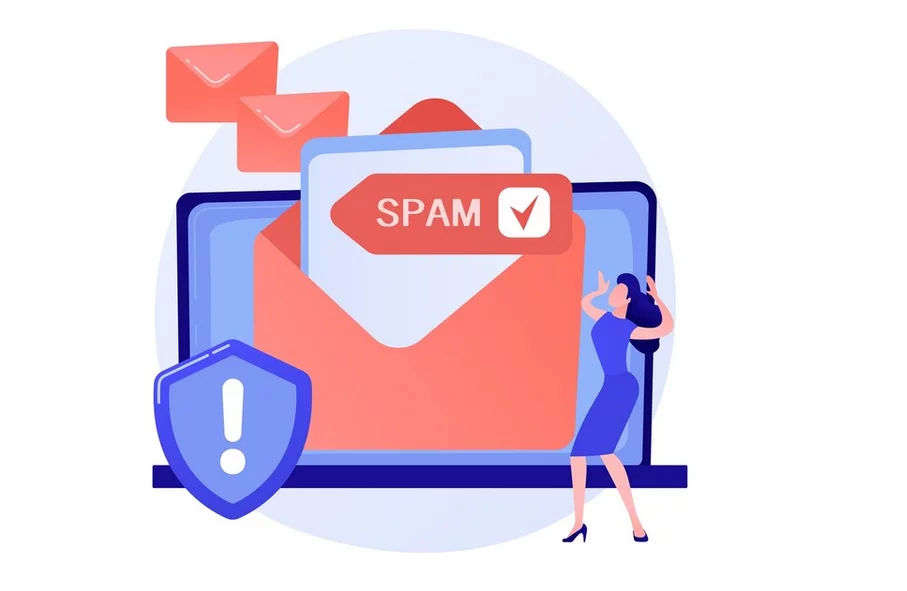
Ensuring that your emails reach your subscribers’ inboxes is vital. Even with proper opt-ins and updated lists, your emails can end up in spam folders. This can harm your sender reputation and undermine your email marketing strategy.
An email spam checker can be a valuable tool. It evaluates how your email is likely to perform with different Internet Service Providers (ISPs) and email clients. It provides recommendations to resolve potential issues, improving your email deliverability.
6. Get An All-In-One Marketing Solution

Consider adopting an all-in-one marketing platform like Moosend, especially if you want greater control over your email marketing activities. Such solutions provide a comprehensive suite of features to create and manage both promotional and transactional emails with ease. You can also track the performance of your emails effortlessly.
API connectors enable you to integrate the platform with your existing tech stack, including CRM solutions, streamlining your operations and enhancing efficiency.
Conclusion
Email marketing remains a value-rich channel to promote your small business, as evidenced by the above statistics. Whether you’re just starting out or already have a strong strategy, email marketing can give you the tools to reach, engage, and expand your audience.
So, in 2023, don’t miss out on the incredible potential of email marketing; it’s not just worth it, it’s essential. Make email marketing a cornerstone of your digital marketing strategy and watch your business thrive.
FAQs on Email Marketing:
How do I start with email marketing?
To start with email marketing, you’ll need to choose an email marketing platform, build an email list, create engaging content, design email templates, and set up automated campaigns. It’s important to comply with email marketing regulations, such as CAN-SPAM in the United States.
What is a good open rate for email campaigns?
A good open rate for email campaigns can vary by industry, but a general benchmark is around 15-25%. However, open rates can be influenced by factors like your industry, audience, and the quality of your email list.
What is the best time to send marketing emails?
The best time to send marketing emails can depend on your target audience and their habits. Generally, sending emails during the middle of the week, between Tuesday and Thursday, and during the late morning or early afternoon can yield better results. However, it’s essential to A/B test different send times to determine what works best for your specific audience.



